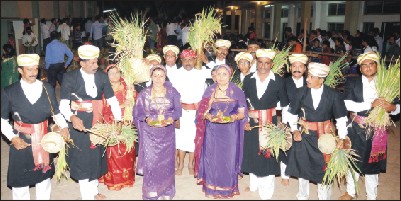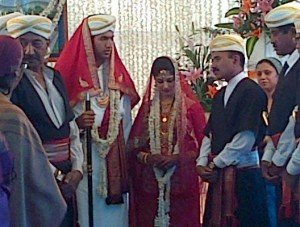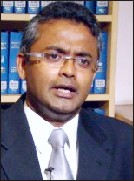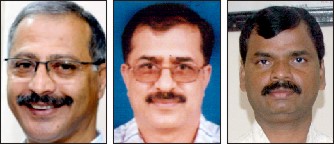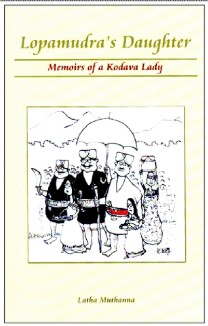
This is a very unusual book, almost a rarity, wherein a daughter pens her mother’s memoirs in first person. While a memoir is a sub genre of autobiography, Gore Vidal differentiates the two thus, “a memoir is how one remembers one’s own life, while autobiography is history, requiring research, dates, facts double-checked.”
The mother in question is Malavanda (Biddanda) Gowramma Achaiah. She decides to pen her life, which in her words, “was as richly eventful as it was lively” and is about a generation “before these mechanised, chaotic times.” She offers her life “as an open book” to the readers. It was originally written in Kodava language in Kannada script. In view of the fact that this did not make for easy reading, her daughter Dr. Latha Muthanna, a well-known physician in the city of Mysore, decided to render it in English.
What initially began as a translation underwent a sea change as more information came in through her daily interviews with her mother. Gow-ramma read the manuscript and approved it but for some minor issues. The end product is a very readable book written in admirable English.
The book is written in the reminiscential mode. It is loosely structured, does not strictly follow chronology and focuses on the dear and near ones who come into her life. What we have in the book is a portrait of a bygone era, an insight to the way of life of the times and the memorable descriptions of different persons, all of whom who form her large family with its tentacles reaching far and wide.
We read about Chonira Mu-thamma, the first woman to join the Indian Foreign Service in 1948. It saddens one to learn how she was discriminated against because of her gender. She was overlooked for the position of Foreign Secretary in 1980. The assumption was that a female married diplomat cannot be trusted to keep State secrets. The author tongue-in-cheek remarks that the male diplomat was, “after all — for want of a better expression — leak proof!”
We have a fully rounded picture of her grandfather, Nadikerianda Chinnappa, fondly called, Dada. Incidentally, it was he who wrote the Kodava folk classic Pattole Palame. Gowramma gives us interesting tit-bits about the manner in which her Dada went about collecting the songs, folk tales, gossipy ballads, allegories and riddles and inscribing them. Dada found that the folklore faithfully carried little-known Kodava history and culture of ancient times. The 500-page volume was published in 1924 and is widely regarded as the first among such a collection of folklore to be published in Kannada. The English version of this magnum opus is now available, thanks to the efforts of Bovverianda Nanjamma and Chinnappa.
Another major influence on her was her grandmother, whom she affectionately called, Chachavva. She remarks, “I got from her the value of hard work, the futility of idle gossip. I learnt hospitality, how to be prepared for unexpected guests. I learnt to care for servants and their families. Most of all, I learnt how to run a home in times of want and to use home-grown resources to their fullest potential. Also, like my grandmother before me, I abhor waste.” These were invaluable lessons for the young Gowramma and they came in handy later in her life.
She had her schooling at Cheyyandane, Kakkabe and Virajpet. It is difficult to imagine the challenges that the young girl enco-untered in her desire to pursue her education. There is a curious encounter that she had with a raging bull in the wilds. She was able to find her way back home due to the help of a Good Samaritan. It is indeed satisfying that she becomes a successful teacher and works for nearly three years until she gets married to Malavanda Achaiah in 1943.
We have a 14-page long description of her wedding. These were well before the days of marriages where we have catering and what is needed is a little planning and lots of money to make it a success. The hustle bustle of the wedding is captured in vivid detail. It was entirely a family event and each member gladly and wholesomely contributed to its celebration. Every aspect of the wedding like the food, sweetmeats, jewellery, various rituals is highlighted.
Gowramma offers the reader a very intimate picture of her married life. Nothing is held back from the reader and one could easily describe them as a ‘Made for each Other Couple.’ However, I would like to allow her the last word: “He was the quintessential free spirit. Were we compatible, to use a modern term? I have not the faintest idea — but I miss my husband very much.”
An important figure in the book is her husband’s maternal uncle, Kollimada Karumbaiah. He was a true Gandhian, was a vegetarian, never smoked or drank and wore only khadi. He was largely responsible for Harijans and Yeravas taking part in the non-cooperation movement, perhaps the first example of its kind in the country.
There is a detailed presentation of Mahatma Gandhi’s visit to Kodagu. Gandhiji addresses the crowd and spoke of the manner in which the British siphoned off the nation’s wealth. He appealed to them to contribute generously and help win our freedom quickly. The women were all dressed in their best silks and heavy jewellery. They slowly but surely respond to Gandhiji’s appeal and gave away their jewels to the Mahatma. Gowramma’s fourteen-year-old sister-in-law, Akkamma gives her gold earrings, the only piece of jewellery she had. And she went about bare eared until she got married. Such was the young girl’s conviction.
Gowramma’s family along with her husband’s twin brothers move on to Chikamagalur and a new life opens out to her. Bringing up a large family gets delineated in some detail. Nevertheless, the life in the different surroundings poses peculiar problems in view of the women wearing their sarees differently. Her honest confession makes for a healthy attitude towards life: “Many were the times when I was tempted to change and conform to the majority, but I am glad that I did not, in the end. An eclectic society is so much richer; besides, I am indeed proud of my Kodava origins!”
She makes a name for herself because of her selfless service to the underprivileged sections of society. While trying to answer the question as to what drew her to social service, she remarks in her typically disarming manner, “Well, I simply wanted to do more.” In recognition of her contribution, the State government honoured her with the Kittur Rani Chennamma award. The Kasuriba Sadan was started in 1962 with Gowramma as its Founder-President. Fittingly, it went on to win the same award a couple of years later.
The narrative reads well. Even though the perspective is that of a ninety-year-old, the language is contemporary and hence has a greater appeal to the modern reader. The style is lucid and makes for interesting reading. It is embellished by figures of speech like similes in the text. Let me illustrate with a few examples: “The result was a young woman who emerged from her bath looking like a boiled prawn,” “tender shoots (of bamboo) would start erupting, their bald heads shiny and glistening like inverted glass bowls” and “when the harvest moon hangs heavy and round, glowing like a pregnant woman, in the cold winter sky.” There is a marvellous freshness about each one of them.
Let me conclude on a personal note. There is a referen-ce to the Editor-in-Chief’s father, Kalyatanda Bopaiah, her class teacher. He was an excellent Maths teacher and the first left-handed person she had seen in her life. He was very kindly disposed towards Gowramma which she acknowledges gratefully. Incidentally, Gowramma was my father’s classmate at Kakkabe. During my meetings with her in Assam where she stayed with one of her sons, Ganesh, she shared with me some of her memories of my father.
Dr. Latha Muthanna could not have thought of a more fitting tribute to her dear mother.
e-mail: belliappa_kc@rediffmail.com
source: http://www.StarofMysore.com / Home> Feature Articles / by K. C. Belliappa / November 19th, 2012
